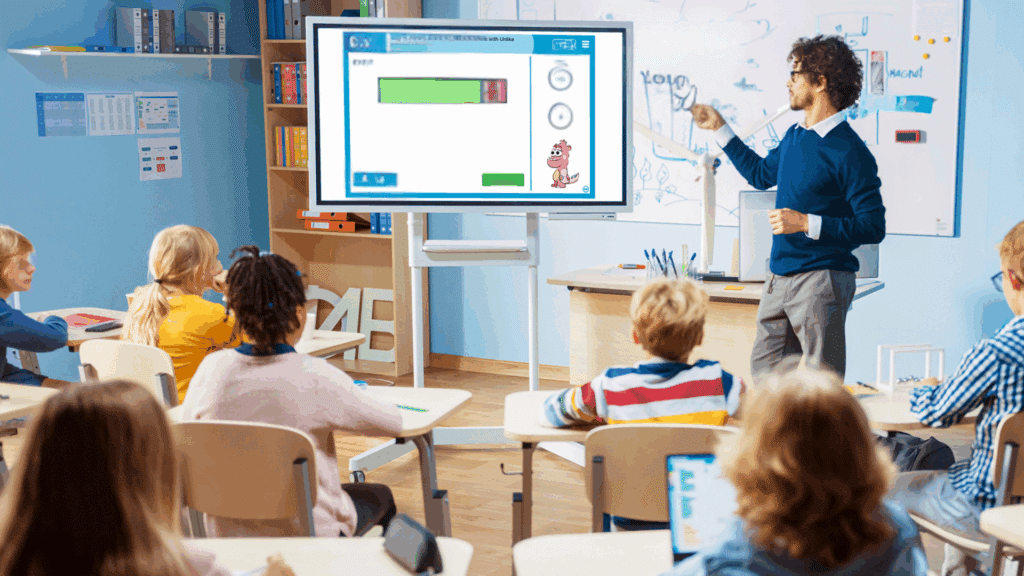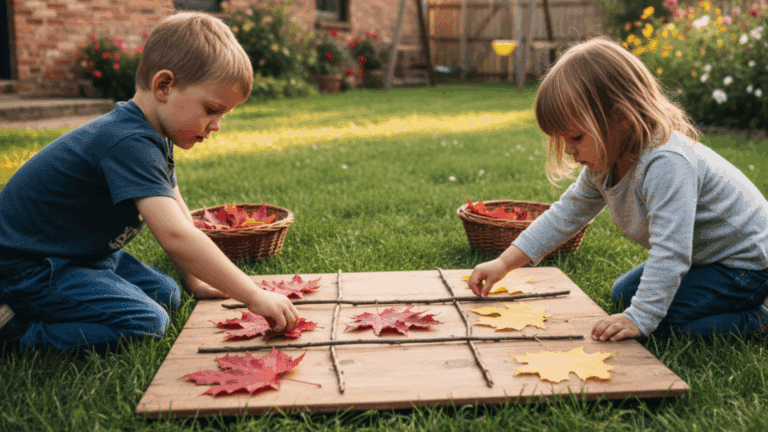Fifth graders often struggle with decimal concepts because traditional worksheets make these abstract numbers feel tedious and confusing.
Students frequently mix up place values or can’t visualize what decimals represent in real life.
These engaging decimal games will transform how students learn and practice decimal skills. You’ll find decimal games for 5th grade that make decimal concepts concrete, memorable, and genuinely fun to find.
This blog covers interactive games that focus on decimal place value, comparing decimals, practicing operations, and researching real-world applications.
Why Are Decimal Games Important for 5th Grade Learning?
Decimal games address the unique challenges fifth graders face when transitioning from whole numbers to fractional parts.
At this age, students need concrete experiences to understand abstract decimal concepts that often seem disconnected from their everyday world.
Games make decimal place value tangible through visual and hands-on activities. Students can physically manipulate base-ten blocks or decimal squares to see how 0.7 relates to seven-tenths.
Decimal games for 5th grade also foster real-world connections through activities that involve money, measurements, and data analysis. These practical applications help students understand why decimal skills matter beyond the classroom walls.
What Makes a Game “The Best” for Teaching Decimals?
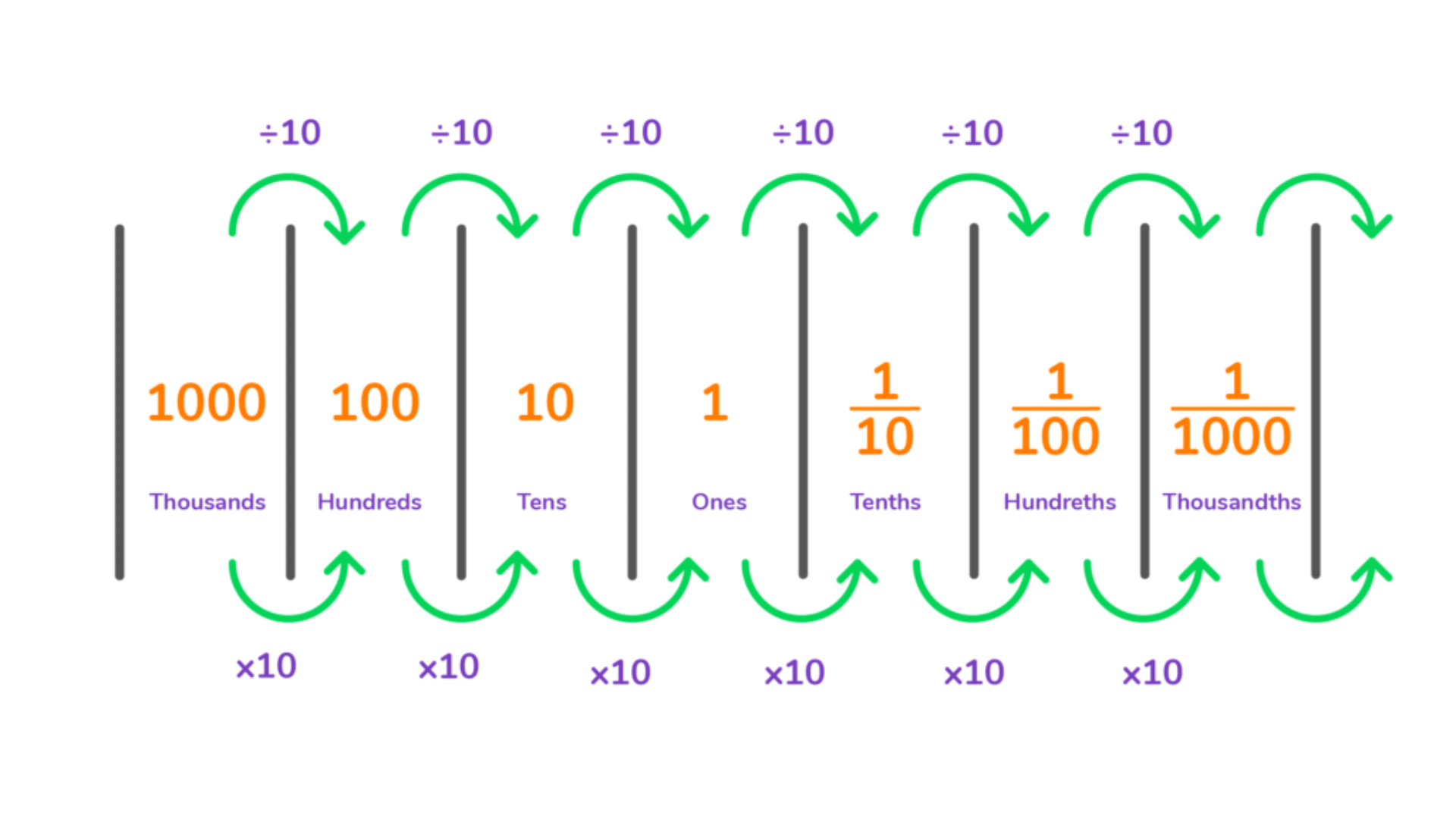
Effective decimal games for 5th grade combine educational value with genuine entertainment, ensuring students learn while staying engaged.
The most successful games address specific learning objectives while accommodating different skill levels and learning styles.
- Clear learning objectives – Games should target specific decimal skills, such as place value, comparison, or operations, rather than general math concepts.
- Visual representations – Best games include base-ten blocks, decimal grids, or number lines that make abstract concepts concrete and understandable.
- Multiple difficulty levels – Quality games adapt to different skill levels, allowing struggling students to succeed while challenging advanced learners appropriately.
- Real-world connections – Games that incorporate money, measurements, or practical scenarios help students see the relevance of decimals in daily life.
- Immediate feedback – Students need instant responses to mistakes, allowing self-correction and preventing misconception reinforcement during play
Fun and Interactive Decimal Games for 5th Grade to Try
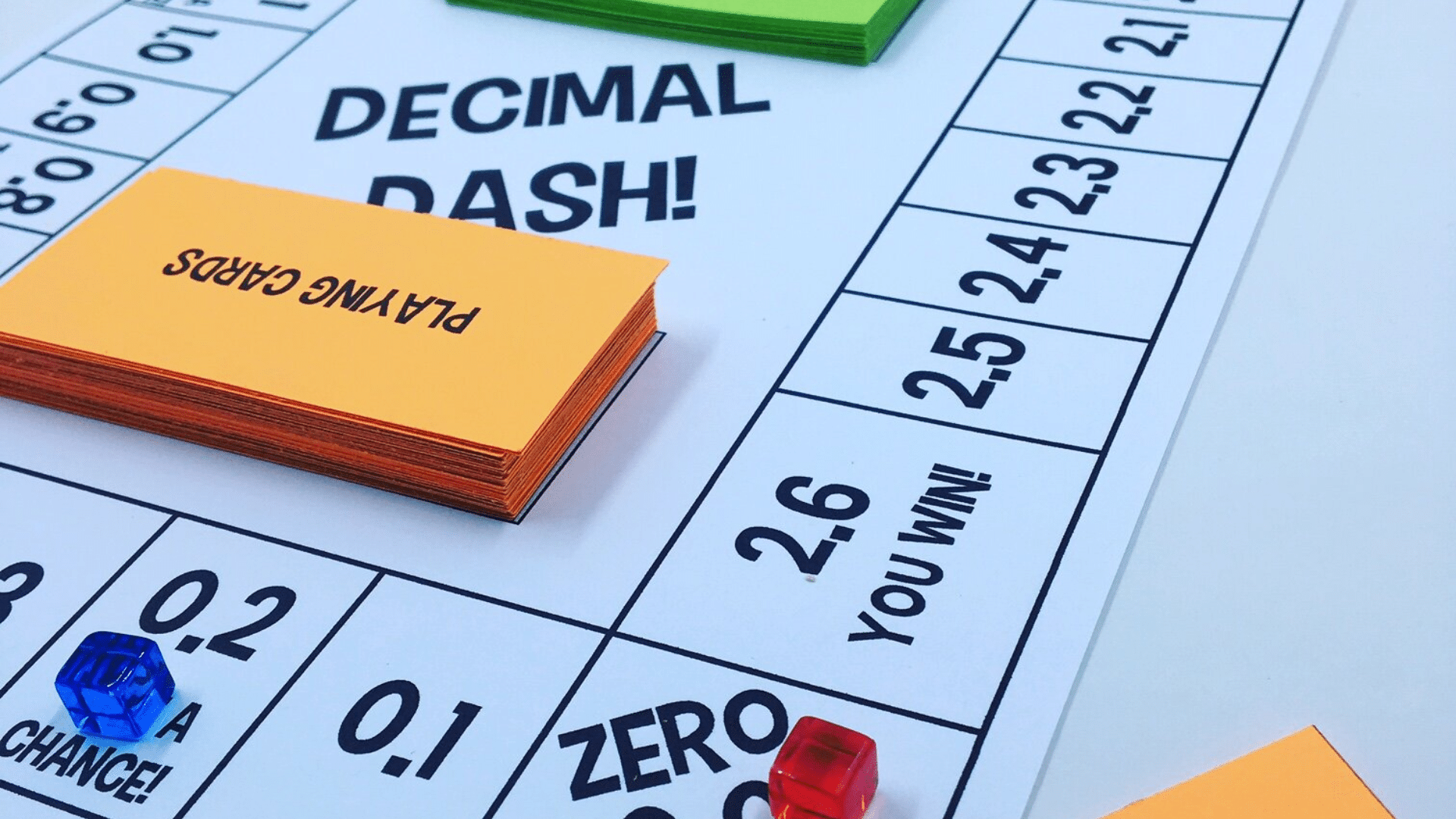
These tested games transform decimal learning from tedious practice into exciting challenges that students request.
Each activity targets specific decimal skills while maintaining high engagement levels through competitive elements and hands-on manipulation.
1. Decimal Relay Dash
Students work in teams to solve decimal problems at different stations in a timed relay format. It builds speed, accuracy, and teamwork through movement-based learning.
- Skills Covered: Decimal operations, quick thinking
- What You Need: Problem cards, stopwatch, team score sheets
2. Roll & Round
Using number or decimal dice, students roll values and round them to the nearest tenth or hundredth. It’s perfect for reinforcing place value and mental math.
- Skills Covered: Rounding decimals
- What You Need: Dice, rounding charts, recording sheet
3. Decimal War
Players form decimal numbers using playing cards and compete to see whose number is greater. The student with the larger decimal wins the round.
- Skills Covered: Comparing decimals
- What You Need: Number cards or playing cards, score tracker
4. Decimal Place Value Showdown
Students race to identify specific place values in given decimal numbers using whiteboards or cards. Fast-paced and ideal for whole-class engagement.
- Skills Covered: Place value identification
- What You Need: Whiteboards, markers, place value prompt cards
5. Fraction-to-Decimal Flip
Students flip a fraction card and convert it to a decimal. Bonus points are awarded for equivalents or simplified forms.
- Skills Covered: Fraction-decimal conversion
- What You Need: Fraction cards, conversion chart, point tracker
6. Decimal Ordering Challenge
Kids receive a mix of decimal cards and must arrange them in order from least to greatest (or vice versa). Add a timer for excitement.
- Skills Covered: Ordering decimals
- What You Need: Pre-made decimal cards, a timer
7. Decimal Bingo
Instead of calling numbers, you call decimal problems (like “0.3 + 0.2”) and students solve them to find the answer on their bingo card.
- Skills Covered: Adding/subtracting decimals
- What You Need: Bingo cards, decimal problem list, counters
8. Decimal Spinner Board
Students spin two spinners—one with decimal numbers, the other with operations—to generate and solve problems. Great for independent or partner work.
- Skills Covered: Decimal operations
- What You Need: Spinner templates, pencils, paper
9. Scoot with Decimals
Students move from desk to desk, solving decimal problems under a timer. It keeps them physically active and mentally sharp.
- Skills Covered: Mixed decimal practice
- What You Need: Scoot cards, answer sheet, timer
10. Online Decimal Mission
Web-based games, such as those on SplashLearn or Math Playground, immerse students in decimal quests with instant feedback and leveled challenges.
- Skills Covered: All decimal concepts
- What You Need: Computers/tablets, access to the selected platform
11. Decimal Detective
Students receive a set of mystery decimal clues (e.g., “My tenths digit is 4, and my value is greater than 3.2 but less than 3.5”). They must deduce and write the correct decimal on their answer sheet.
- Skills Covered: Decimal place value, logical reasoning
- What You Need: Clue cards, answer sheets, pencils
12. Decimal Match-Up
Pairs of cards are created, one with a decimal expression (like “0.7 + 0.2”), the other with its answer (“0.9”). Students race to match expressions with their correct values.
- Skills Covered: Decimal addition/subtraction, equivalence
- What You Need: Expression cards, answer cards
13. Decimal Art Grid
Students color a grid based on decimal coordinates (e.g., color the square at (0.4, 0.7) red). This visual activity reinforces decimal placement on a grid.
- Skills Covered: Plotting decimals, coordinate understanding
- What You Need: Blank grids, colored pencils, coordinate cards
14. Decimal Story Problems
Students write and solve word problems involving decimals, then exchange with classmates to solve each other’s problems.
- Skills Covered: Application of decimals in real-life contexts, problem-solving
- What You Need: Writing paper, pencils
15. Decimal Estimation Jar
Fill a jar with small objects (like beads or marbles) and label it with a decimal value representing an estimated weight or volume. Students estimate the actual value and compare it to the label.
- Skills Covered: Estimation, decimal measurement
- What You Need: Jar, objects, scale/measuring cup, estimation slips
16. Decimal Hopscotch
Create a hopscotch grid with decimal values instead of whole numbers. Students toss a marker and must solve a decimal problem to advance to that space.
- Skills Covered: Decimal operations, movement-based learning
- What You Need: Chalk/tape, markers, decimal problem list
17. Decimal Memory Match
Create pairs of cards with decimals and their equivalent fractions or visual models. Students play a memory game, flipping two cards at a time to find matches.
- Skills Covered: Decimal-fraction equivalence, visual recognition
- What You Need: Decimal cards, fraction/model cards, playing space
Integrating Decimal Games into Real Learning Environments
Successfully implementing decimal games for 5th grade requires thoughtful planning that strikes a balance between fun and focused learning objectives.
The key lies in seamlessly weaving game-based activities into the existing curriculum without sacrificing instructional time or academic rigor.
Classroom Management During Game Time:
Teachers need clear procedures for distributing materials, forming groups, and managing noise levels during decimal games. Establish signals to capture attention and designate specific spaces for various activities.
Post-game rules visibly and assign student helpers to distribute materials efficiently. Set time limits and use timers to keep activities focused while allowing enough time for meaningful learning to occur.
Assessment Through Game Play:
Use games as informal assessment opportunities by observing student thinking and misconceptions during play.
Create simple checklists to track which students demonstrate a solid understanding of decimals versus those who need additional support.
Take photos of student work during games to document learning progression. Games reveal student thinking patterns that traditional tests often miss, providing valuable diagnostic information.
Home-School Game Extensions:
Send simple decimal games home that families can play together using everyday materials.
Create instructional sheets for parents that explain how games reinforce classroom learning and learning objectives.
Suggest ways families can extend decimal practice through cooking, shopping, and measurement activities. Encourage parent-child competitions that make decimal practice a fun family bonding experience.
Technology Integration Options:
Combine physical games with digital tools when appropriate to enhance learning experiences.
Use tablets or computers for decimal games that provide immediate feedback and adaptive difficulty levels.Project digital decimal manipulatives during whole-group instruction to demonstrate game strategies.
Balance screen time with hands-on activities to accommodate different learning preferences and maintain a variety of engagement.
Decimal Game Tips for At-Home Practice
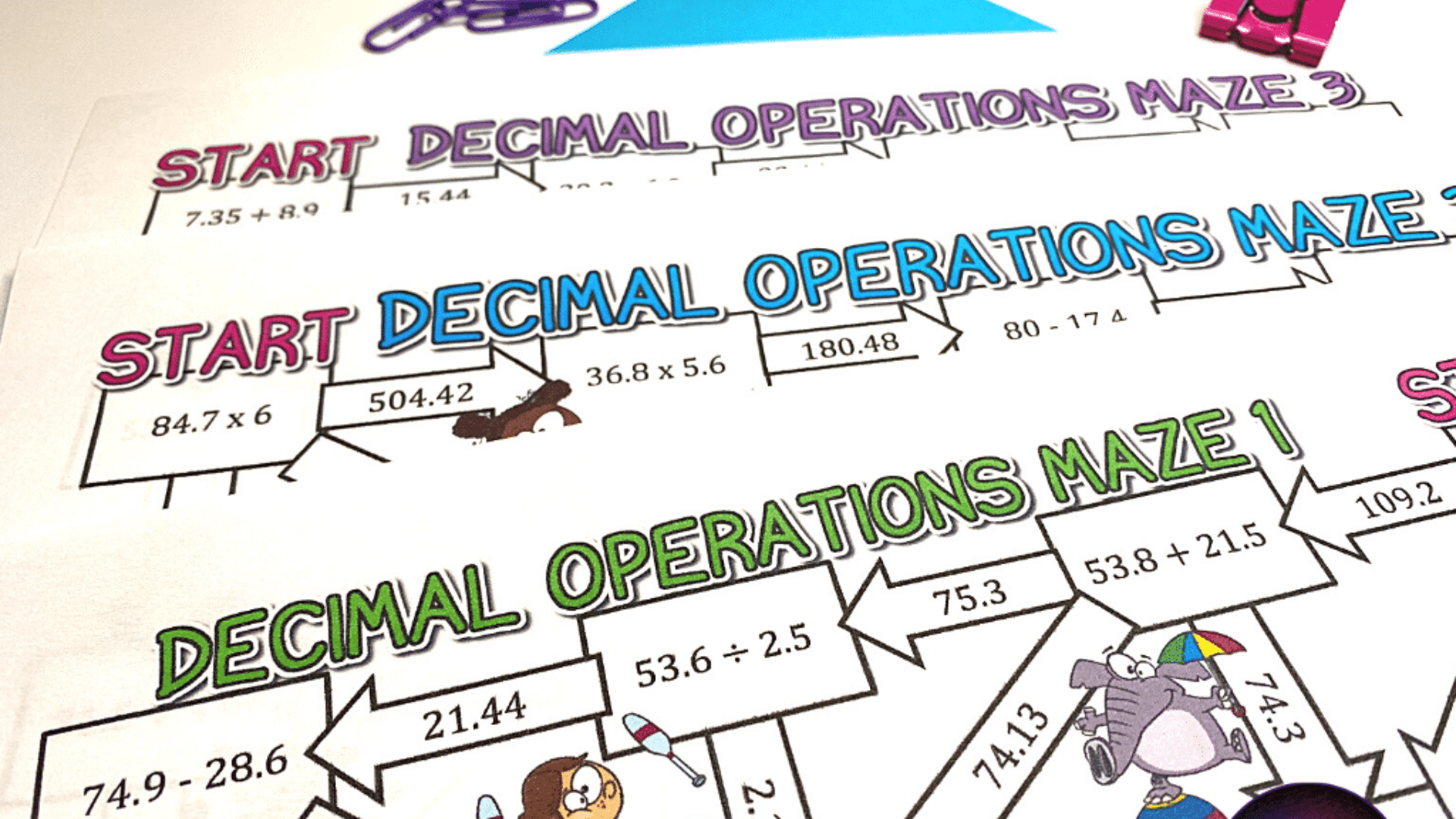
Parents can easily extend classroom decimal learning through simple games using household items and everyday situations. These at-home activities reinforce school concepts while making family time educational and enjoyable.
- Use real money for decimal practice – Count coins and bills to practice decimal place value, with pennies representing hundredths and dimes as tenths.
- Create cooking measurement games – Have children measure ingredients using decimal amounts, such as 2.5 cups of flour or 1.75 teaspoons of vanilla.
- Turn shopping into decimal practice – Compare prices, calculate totals, and figure out change while grocery shopping or browsing online stores together.
- Set up decimal scavenger hunts – Search for decimal numbers on food packages, measuring tools, or household items throughout the house.
- Create simple board games – Design paths where players move spaces based on decimal calculations or comparisons using everyday materials, such as cardboard and markers.
Final Thoughts
Decimal games for 5th grade convert abstract mathematical concepts into concrete, enjoyable learning experiences that stick with students long after the lesson ends.
These activities foster genuine understanding while maintaining engagement levels that traditional worksheets cannot match.
The games and strategies outlined here provide teachers and parents with proven tools for decimal instruction. Remember that consistent practice through varied activities leads to mastery and confidence.
Start implementing these games gradually, adapting them to fit your specific classroom or home environment.


